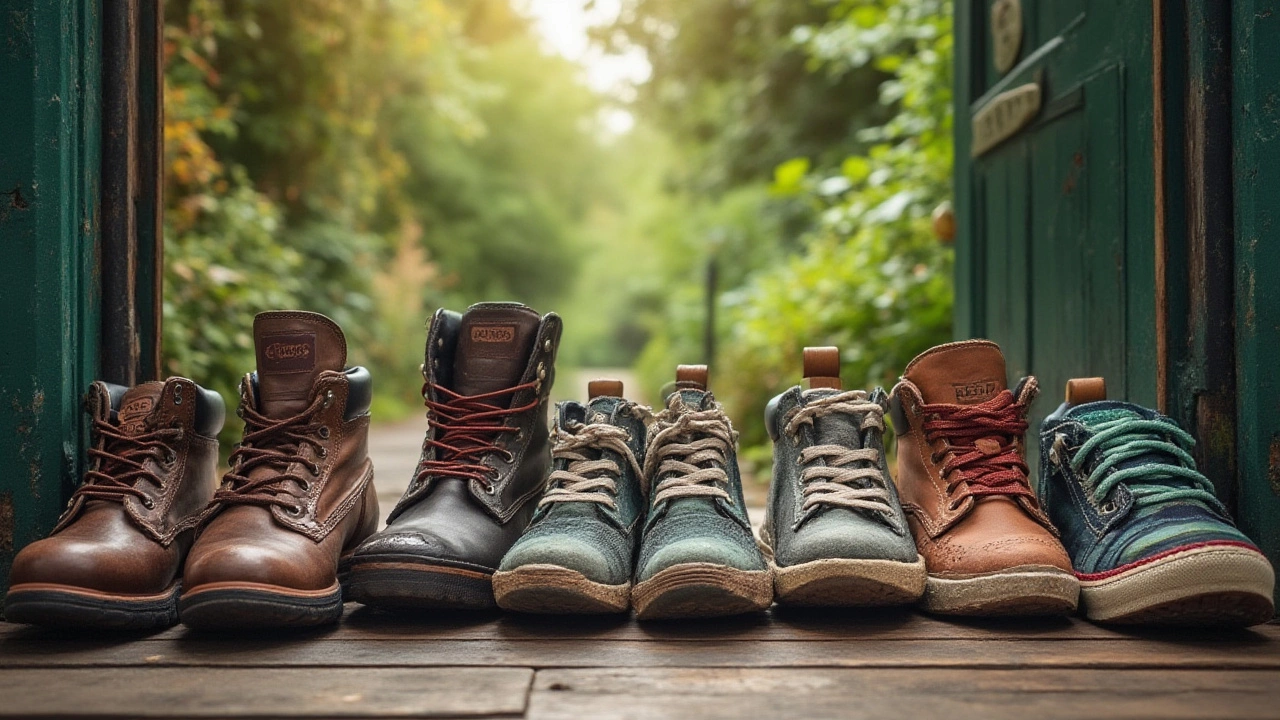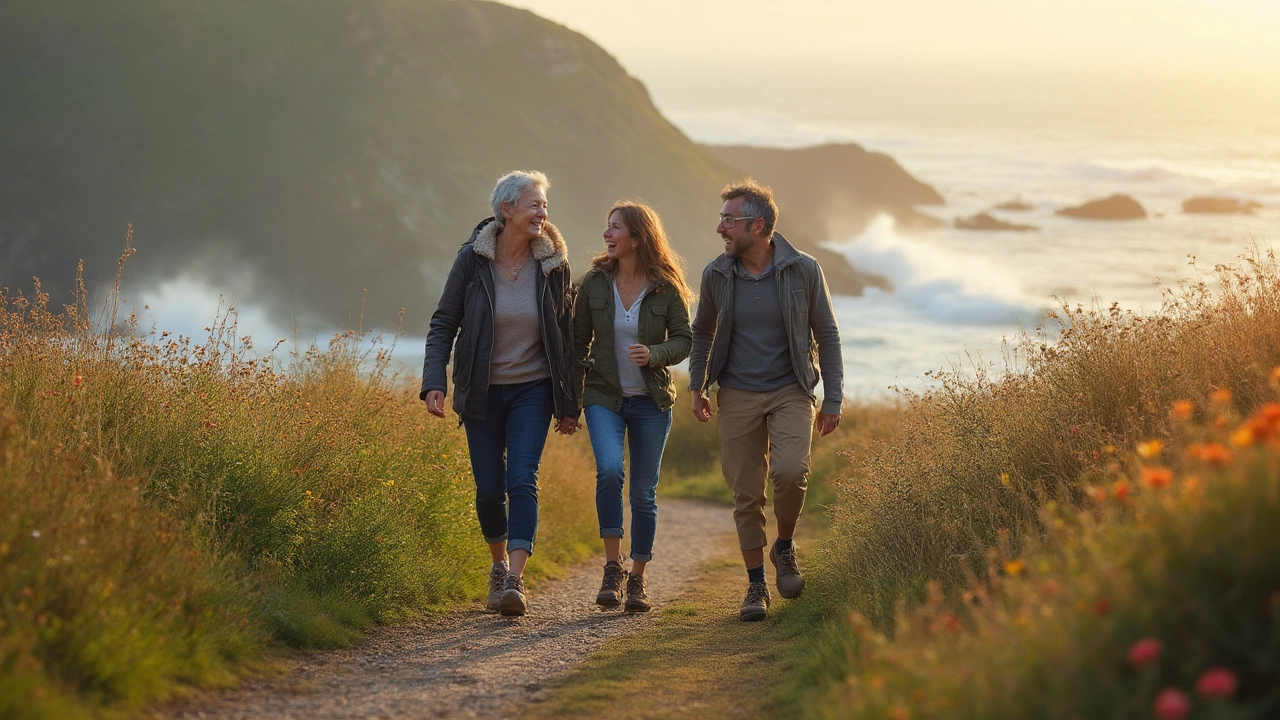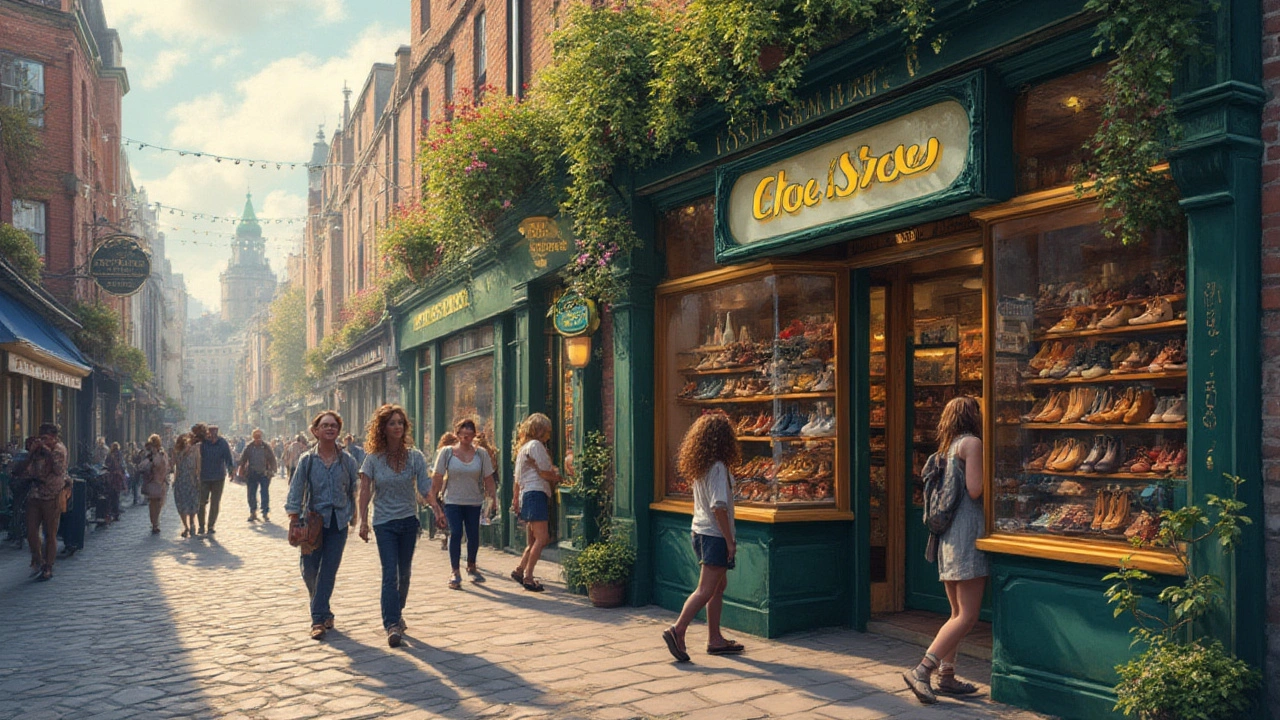There are plenty of things in Ireland we just don't compromise on—good pints, a proper fry, and, if you live here long enough, shoes that don’t make you question your will to walk. Whether you're pacing along the Ha'penny Bridge, hiking the boggy trails in Connemara, or schlepping the daily commute between Luas stops, finding a comfortable shoe in Ireland isn’t just nice, it’s survival. The Irish market isn’t flooded with the same options you’ll see in London or New York, which makes the hunt for that perfect shoe feel a bit like a sport itself. But when you manage to land a pair that keeps the rain out, the blisters away, and your feet from packing it all in on that fifth Grafton Street lap? Heaven.
Shoe Comfort: What Matters in Ireland
If you’ve ever taken a stroll through Dublin’s city centre in a downpour or tried to dodge puddles on the paths up Glendalough, you’ll know comfort in a shoe isn’t just about a plush insole. Irish weather gives us rain, sleet, rare sun, and weeks of either, so waterproofing isn’t a trendy extra—it’s essential. Then factor in all those uneven cobblestones, ancient pavements, and the hills of Cork or Galway. That’s why shoes with grippy soles, proper arch support, and decent breathability are snapped up quick in Irish shops.
The sneakers that do grand in Spain might not cut it for an Irish Monday morning school run. Genuinely comfy shoes need to go the distance, stay fresh after a walk around Phoenix Park, and handle the climate. Clarks is legendary for this; Irish mammy-approved and still top of the list for school shoes, work loafers, or sandals that won’t destroy you by lunchtime. They’re everywhere—from Dundrum to Mahon Point—and their wide-fit options mean you can even wear your thermal socks all winter. Skechers exploded in popularity here too, especially their memory foam insoles (perfect if you’re always on your feet or running after small kids like Cael and Niall). Then you have Ecco, a Danish brand with Dublin stores, whose soft leather and shock-absorbing soles make them a big hit for folk who want something subtle but supportive. Ecco’s rain-friendly designs are lifesavers during festival season or just walking back from SuperValu with groceries in a storm.
Don’t count out Irish-born brands either. Dubarry is famous among the sailing set and for good reason: their boots and deck shoes are built to take on Irish puddles and salty piers alike. For runners, Asics and Brooks have serious fanbases in Ireland—just ask anyone lacing up for the Dingle Marathon or parkrun in Marley Park. Asics’ Gel-Nimbus series often land at the top of comfort lists thanks to their cushioned midsoles and solid grip. If your feet are more likely to be found wandering the aisles of Lidl than pounding the pavements, there’s a cult for Hotter Shoes too. Their focus is pure comfort, so if you’re after something you can slip on before heading to the shops or school gates, they get the job done.
It’s not all about athletic wear and walking shoes, mind. Doc Martens have long had a place in Irish street style—especially if you want something tough enough for damp weather while still looking a bit rebellious. Their insoles get some stick for being hard on first wear, but most Irish fans reckon they wear in beautifully and last donkey’s years. If you’re after pure slipper-like comfort for indoor wear, something as simple as Shoezone’s classic moccasins or slippers do exactly what’s needed when the heating’s struggling to keep up with our winter winds.
The demand for comfort isn’t just personal—it’s cultural here. We’ve all grown up with stories of GAA matches in muck, coastal walks from Bray to Greystones, or trekking sheep-filled hillsides. Irish feet have seen it all. It’s why a survey last year (run by Kildare Village and published by The Irish Times) found that comfort and durability were the top reasons people in Ireland replaced old shoes. 63% said sore feet had made them regret a shoe purchase, and about half of parents named proper support as their non-negotiable for their kids’ school and sportswear. One look at the queues outside Clarks and Skechers the week before school starts and you’ll see it in action.
So if you’re shoe shopping in Ireland, think about where you’ll wear them the most. City walkers need shoes that won’t slip on wet steps. Country walkers want soles that dig into mud but rinse clean after. Commuters need something grippy enough for the slick Luas floor. And for those rare hot days, breathable mesh keeps you cool on that surprise July heatwave—just don’t hold your breath waiting for it.
| Brand | Main Comfort Feature | Best For | Where to Buy in Ireland |
|---|---|---|---|
| Clarks | Wide fit, arch support, water-resistant | Daily wear, school/work | Clarks stores, Department stores |
| Skechers | Memory foam, lightweight | Commuting, walking, casual | Skechers shops, sports stores |
| Ecco | Soft leathers, shock-absorption | Work, city, travel | Ecco shops, Brown Thomas |
| Dubarry | Waterproof, robust sole | Country walks, sailing | Outdoor shops, Dubarry outlets |
| Asics | Gel cushioning, grip | Running, sport | Elverys, Lifestyle Sports |
| Hotter | Padded insoles, easy fit | Everyday, retirees | Online, select shops |
| Brooks | Support, shock absorption | Running, long walks | Amphibian King, sports shops |
| Doc Martens | Durable, iconic design | Fashion, work, daily | Doc Martens stores, Schuh |
| Shoezone | Budget, soft lining | Slippers, indoor wear | Shoezone shops |

Irish-Tested: Real Accounts and What Works Day to Day
It’s one thing to talk up a shoe brand’s claims, another to see if they actually hold up on Irish turf. Here’s where you get the real story—from people who just want their feet to feel good whether they’re clocking up steps at a festival or chasing after toddlers on sand dunes.
I’ll start with my own tally. With two lads to wrangle (mine are 6 and 13—never still), I’ve weathered enough soggy Saturday mornings at St Anne’s Park to develop strong opinions about kids’ shoes. Clarks Winneford or Scala leather school shoes last longer than schoolbags, which is saying something. And when it comes to play, Skechers GoRun has given my eldest the bounce to keep up with football, tag, or spontaneous ‘let’s see who can run to the car first’ competitions. I’d be lost without my own pair of Ecco Track shoes for hikes. Never once had a blister, even after three hours in the rain heading up Ticknock—and they’re still decent enough for pub grub afterwards.
My neighbour Siobhan swears by Hotter for daily dog walks and errands. She broke her ankle a few years ago, so now she needs shoes that cushion every step and don’t leave her limping after the postman. “No more cheap shoes from shopping trolleys,” she laughed in the rain, “I’d rather pay that bit extra for no pain.” She’s not alone. A poll by Independent.ie found that more than 70% of Irish shoppers now rate comfort and support above looks or price when picking out new shoes.
Teenagers at the local sports club usually stick with Asics or Brooks for running, especially for training sessions in wet grass. One coach pointed out that even though the Brooks Ghost series can be pricey, his team invests because it cuts down on minor injuries—sprains, aches, plantar fasciitis. For trips away, like school tours around Kilkenny Castle or the Cliffs of Moher, families planning for lots of walking often go for Skechers (kids) or Ecco (adults). The parents say it’s one of the few things the whole family agrees on.
It’s not unheard of to see festival-goers at Body & Soul or Electric Picnic breaking out the Dubarry boots. Wet fields, endless music, and a need for something you can wash off with the garden hose when you get home—that’s the Dubarry sweet spot. And for those who work on their feet daily—nurses, shop workers, bartenders—Hoka and Skechers are now among the most recommended brands, according to customer feedback surveys by Arnotts and Schuh in Dublin. Plenty reported finishing a 10-hour shift with less fatigue, meaning energy left for a late pint or the last bus home.
With the rise of working from home, there’s been a surge in indoor slipper and moccasin sales as well, often from local Irish makers found at weekend markets in Dingle or Sligo. Nothing beats the feeling of swapping muddy school run trainers for plush slippers on a stormy afternoon.
Another thing—Irish people, as a rule, are pretty loyal to brands that don’t let them down. Once someone finds a shoe that takes them through an Irish winter with dry, happy feet, they’ll stick with it. That’s why you’ll see diehards for Clarks every time the rugby is on or parents snapping up back-to-school pairs at August sales before they sell out. It’s not hype. It’s learned from soggy, sore-footed experience.

Tips for Picking the Most Comfortable Shoes in the Irish Market
If you want your next pair to keep you smiling all the way from the DART to the cliffs, it pays to know what to look for and where. Here are hard-earned tips from years of shopping every sale, trawling Irish high streets, and coaxing cranky kids through shoe fittings.
- comfortable shoes Ireland: Always try on shoes with the socks you usually wear, especially if it’s winter. A shoe that fits with thin socks might squeeze the life out of you when paired with woollies in January.
- Shopping in person still gives the best fit, and Clarks is one of the few shops with experienced staff on hand to measure feet properly. Don’t be shy to ask for different sizes—Irish feet can be wide, and there’s no shame in asking for a wider or larger size if needed.
- If you do buy online, stick to Irish or reputable UK shops—returns are easier and delivery is often quicker than ordering from further afield.
- Always check the sole. For towns like Galway or Limerick, where rain and slick stone are regulars, you need good tread. Test for slip-resistance by pressing your thumb into the sole—it should give a bit, not just slide under pressure.
- Don’t skip waterproofing spray, especially for suede or fabric. Some shops even sell their own brands—Brown Thomas carries several options. You’ll never regret spraying your brand new trainers before a Galway downpour.
- If you’re planning a hike in Wicklow or Connemara, head to an outdoor specialist (like Great Outdoors on Chatham Street or Basecamp) for advice tailored to Irish trails and climate. Bring info on where you’ll walk and how long, and they’ll recommend boots with the right balance of support and weight.
- For commuters, look for shoes with shock absorption—your knees and back will thank you after a week on Dublin’s uneven footpaths.
- Take advantage of sales—back-to-school in August and Black Friday have big discounts on the best brands.
- Watch for shop loyalty schemes—Arnotts, Elverys, and even Skechers often run points systems or coupon days, especially around Christmas or the start of sports seasons.
- Local Facebook groups and parent WhatsApp chats can be goldmines for up-to-date deals, warnings on which brands run small, and recommendations you can actually trust.
There’s no single answer to the question "what brand of shoe is the most comfortable?" in Ireland, because comfort is personal and depends on everything from your foot shape to how many puddles you’ll be dodging. Clarks, Skechers, and Ecco reliably top the charts for pure daily comfort in Irish conditions, with brands like Dubarry, Hotter, Asics, and Brooks covering just about every need you’ll come across here. Irish weather and Irish walking are their own kind of challenge, but if you pick the right pair, you’ll stay comfortable through it all—rain, rugby, and the endless search for a taxi on Saturday night.
